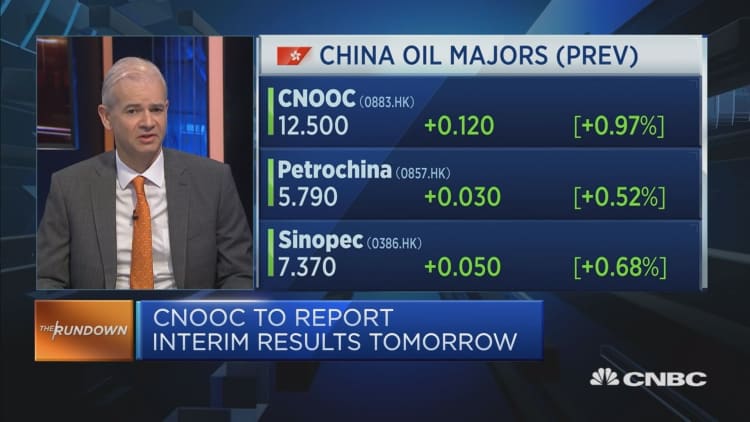Oil prices steadied on Thursday as an escalating trade dispute between the United States and China offset a bullish report on U.S. crude stockpiles.
U.S. light crude ended the session 3 cents lower at $67.83. Benchmark Brent crude oil was also trading roughly flat at just below $75 a barrel.
Both contracts rose by more than $2 a barrel in the previous session after the U.S. government reported a bigger-than-anticipated drop in crude stockpiles.
"The bullish afterglow of yesterday's drop in U.S. oil stocks is fading as concerns over the U.S.-China trade spat return to the fore," said Stephen Brennock, analyst at brokerage PVM Oil Associates.
"Fears are rife that economic headwinds stemming from an escalation in their trade war will ultimately hurt global oil demand."

The trade dispute between the United States and China deepened on Thursday with the imposition of 25 percent tariffs on $16 billion worth of each other's goods.
The world's two largest economies have now imposed tariffs on a combined $100 billion of products since early July, with more in the pipeline, adding to risks to global economic growth.
Washington is holding hearings this week on a proposed list of another $200 billion worth of Chinese imports to face duties, to which China is almost certain to respond.
"These (overall) measures are expected to shave up to 0.3-0.5 percentage points from China's real GDP growth in 2019," said rating agency Moody's Investor Service. "For the U.S. ... trade restrictions will trim off about one quarter of a percentage point from real GDP growth to 2.3 percent in 2019."
Oil demand is closely linked to economic activity and the trade dispute has already led analysts to trim their forecasts for future energy consumption.
But while the outlook for oil demand growth may be moderating, some markets are tight.
U.S. commercial crude oil inventories fell by 5.8 million barrels in the week to Aug. 17 to 408.36 million barrels, the Energy Information Administration (EIA) said in its weekly report. That was nearly four times the drop forecast by analysts in a Reuters survey.

"This week's report was bullish for crude," said Societe Generale oil analyst Michael Wittner. "Crude stocks drew due to sharply lower crude imports and near-record refinery crude runs."
Meanwhile, U.S. oil production is rising as shale output increases, reaching 11 million barrels per day last week, the EIA report said.
That means the world's three top producers, Russia, the United States and Saudi Arabia, now all pump around 11 million bpd, meeting a third of global demand.
"The market is trying to balance the worries about decreased global demand growth and how much extra oil the Saudis and Russians are going to put on" to compensate for an anticipated drop in Iranian exports due to U.S. sanctions, said Gene McGillian, director of market research at Tradition Energy in Stamford, Connecticut.
— CNBC's Tom DiChristopher contributed to this report.

